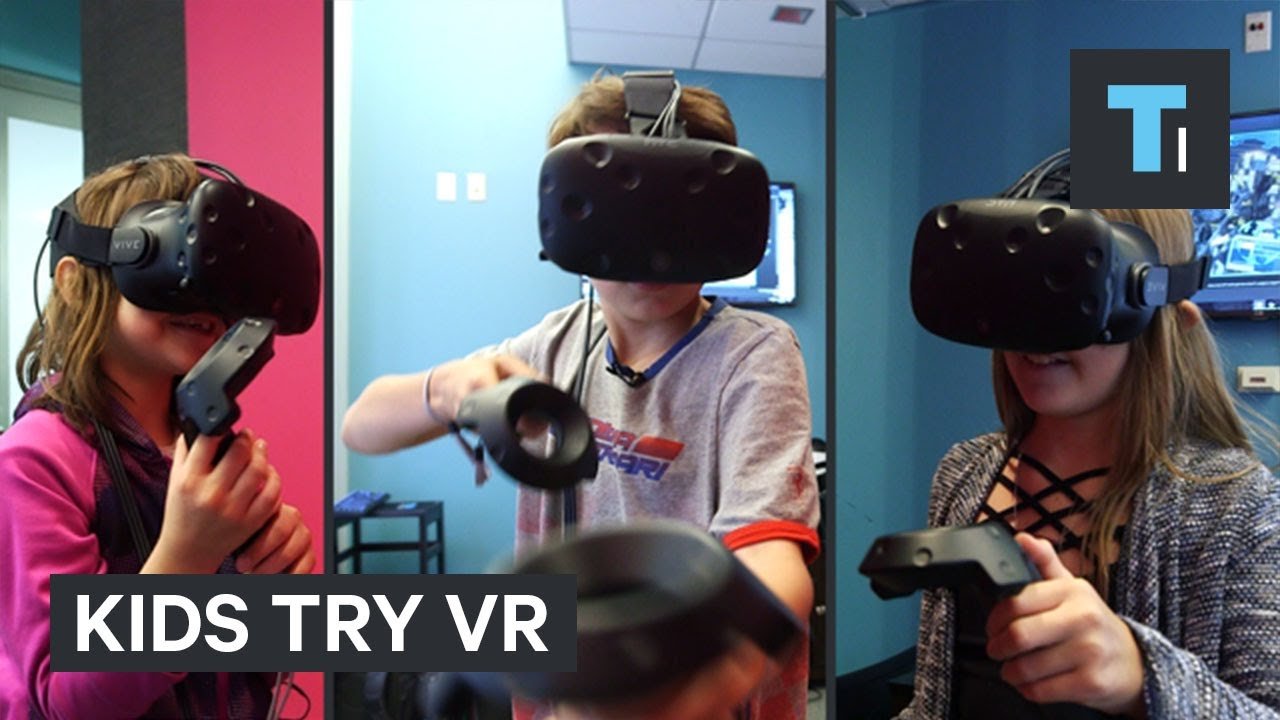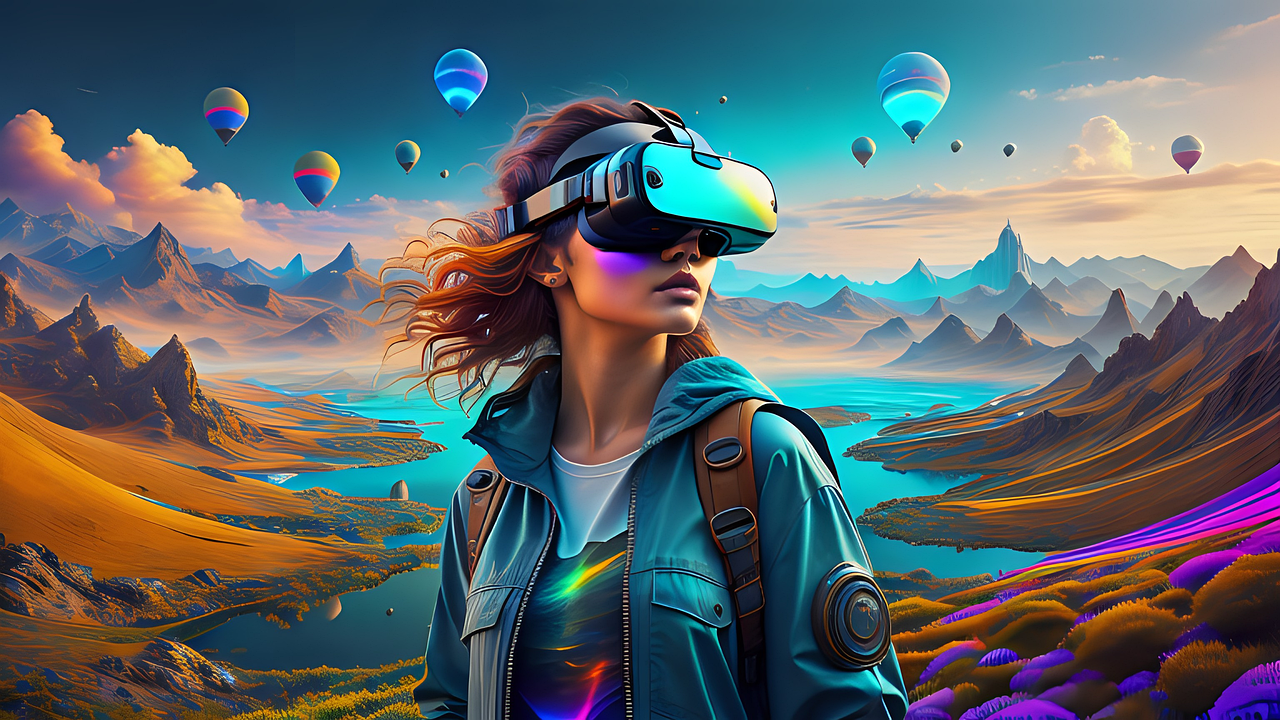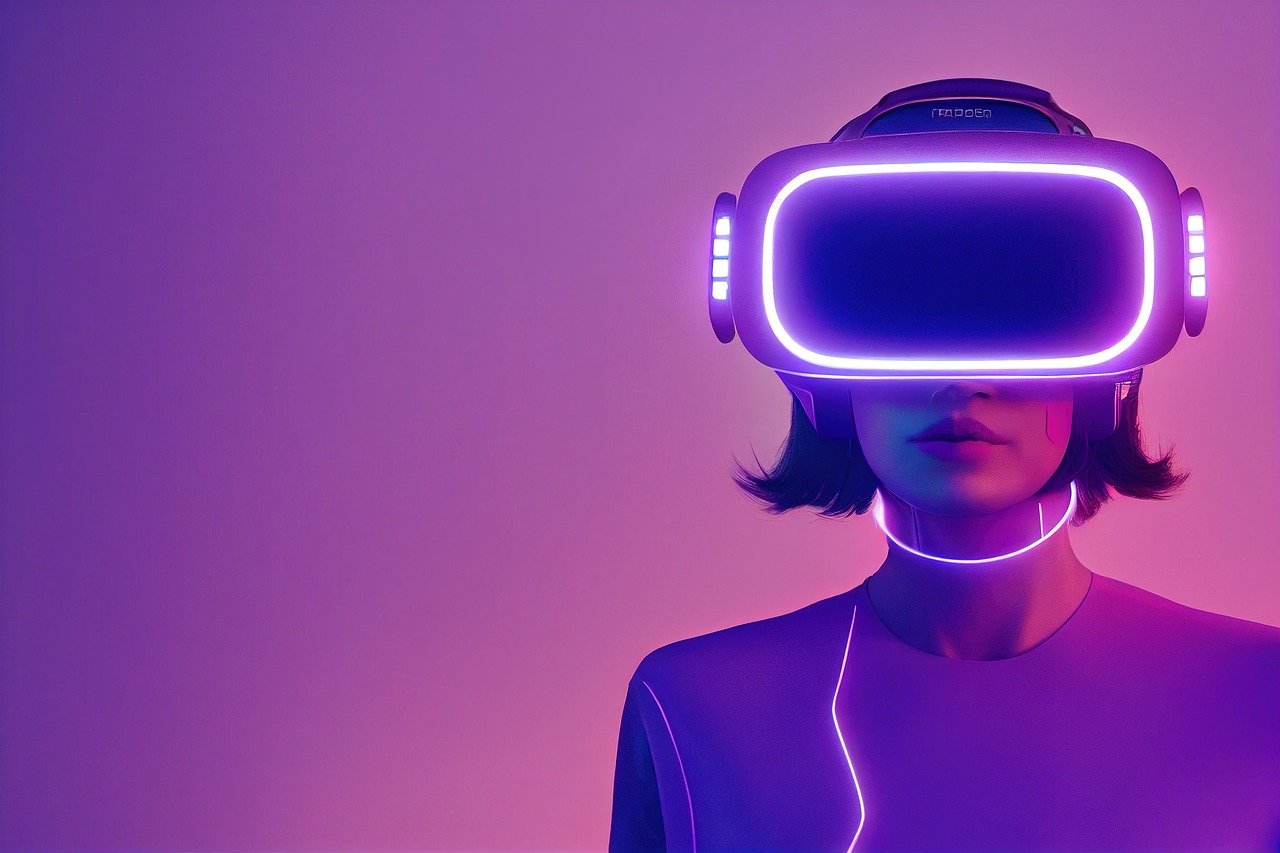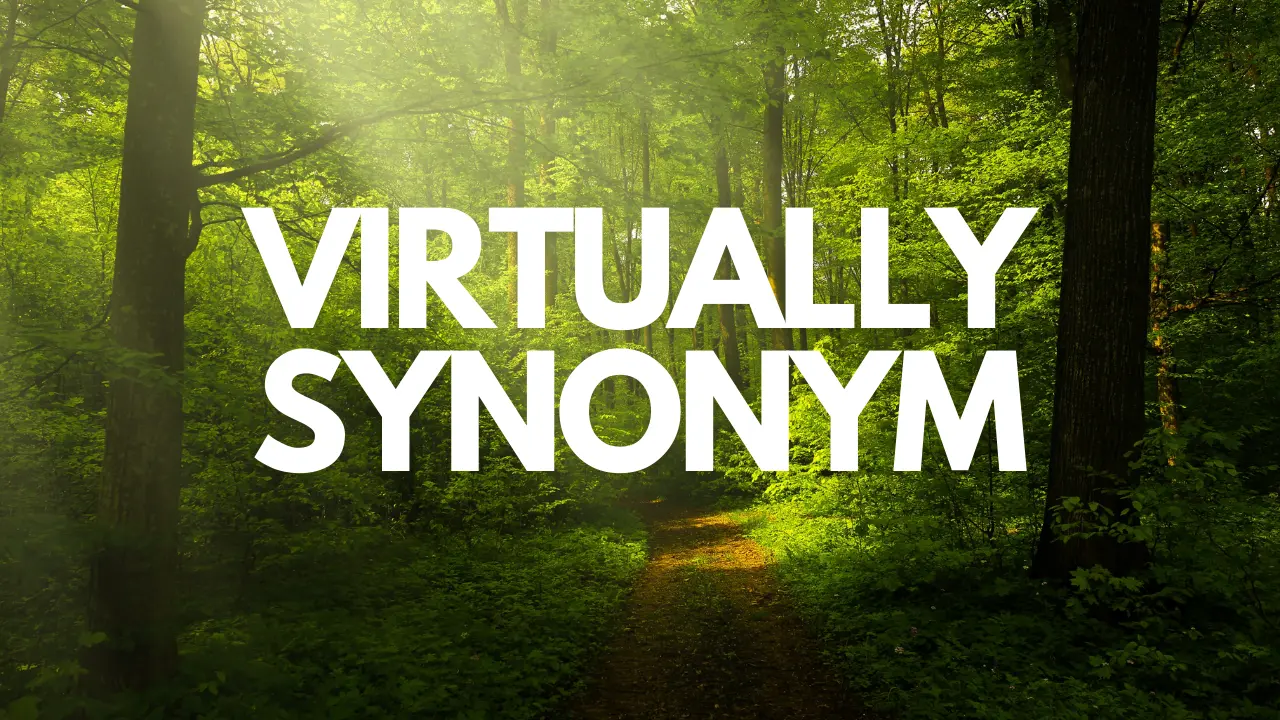Strap on your virtual reality goggles, parents – we’re about to take a deep dive into the wild world of Virtual Reality for Kids. As someone who can barely operate my own smartphone, I never imagined my days would be spent untangling a rat’s nest of cables just so my children can zap virtual aliens in hyperspace. But here we are! While every parental fiber of my body screams this technology will rot their brains, I can’t deny the look of joy on their faces. Maybe VR isn’t so bad after all? Join me on this virtual adventure as I learn to embrace the digital realm – and pray it doesn’t replace me entirely.
Virtual Reality Headsets Designed for Kids
Entry-Level Headsets
If your little cherub wants to dip their toes into the virtual waters, start with an entry-level VR headset like the Osmo Super Studio or the Mattel View-Master. These offer kid-friendly content that’s more augmented reality than full-on VR. Perfect for short attention spans and sensitive little eyes.
Robust Options for Older Kids
For the more sophisticated child gadget enthusiast, step up to something like the Merge Virtual Reality for Kids. It works with over 100 VR apps and games, so endless hours of entertainment without actually leaving the couch. The bonus? Its foam insert means less chance of VR faceplant after tripping over the dog.
If your kid’s really serious, the Oculus Quest 2 lets them play dedicated VR games, watch 360 movies, and even create their own VR art. Of course, that level of tech doesn’t come cheap, so hope they don’t lose interest in a week.
Travel the World From Home: Virtual Tours in VR
Set Some Limits
No matter which headset you choose, set some limits. As much as kids love screens, VR can be disorienting and overstimulating. Most experts recommend short sessions, 10-15 minutes at a time for kids, to avoid eye strain or behavioral issues. Take breaks in between to reconnect with the real world.
While virtual reality opens up exciting new worlds for kids to explore, real-world interaction and outdoor play are still so important for their development. Fancy gadgets are fun, but they’re no substitute for human relationships and experiences. Make the real world your top priority, and keep virtual reality in moderation. Your kids will thank you for it later Virtual Reality for Kids.
What Age Is Appropriate for Virtual Reality?
As a parent, figuring out what fancy techno-gadget is age-appropriate for your kid can feel like navigating a minefield. Especially with something as snazzy as virtual reality. ### Kids Under 6 Years Old
Forget about it. Their little developing eyeballs and brains just aren’t ready for VR. Unless you want a puking, crying mess on your hands. ### 6 to 12 Years Old
This is iffy territory. Some VR experiences are fine for kids this age, especially educational stuff and kid-focused apps. But their brains are still developing, so limit use to less than 30 minutes at a time, and avoid anything too intense or realistic.
Teenagers
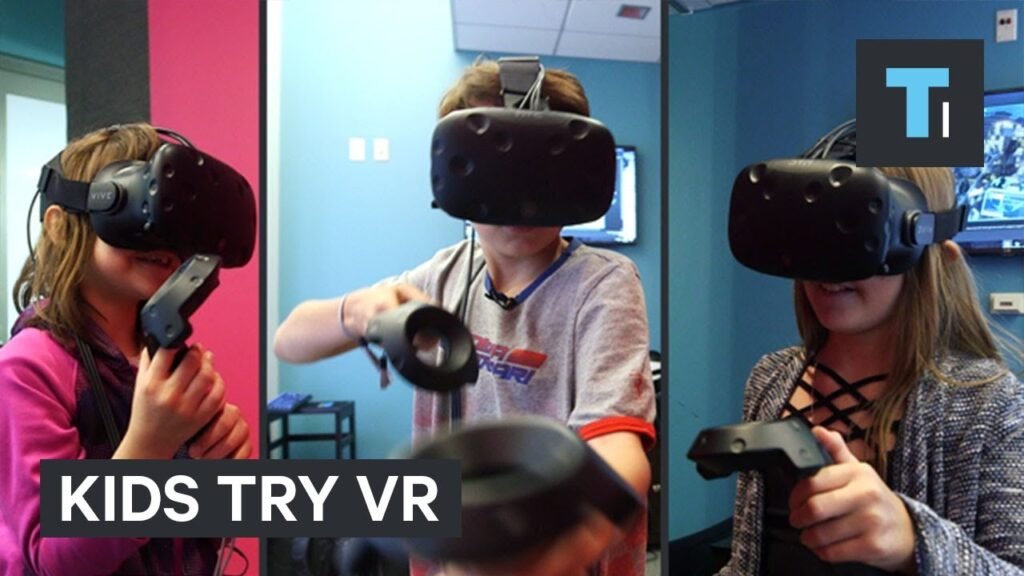
Once kids hit their teens, their eyes and brains can generally handle VR in moderation. But you still need to exercise caution. No Resident Evil VR or other gory games. And set time limits – just because their eyes won’t melt doesn’t mean 8 straight hours of VR is good for them.
As with any technology, moderation and content monitoring are key. While virtual reality can be an exciting educational and entertainment tool for kids and teens, their wellbeing should always come before the fancy bells and whistles of new tech. If Timmy’s grades start slipping or Sally seems withdrawn after long VR binges, it’s time to pull the plug. The real world is still far more important for developing minds than any virtual one.
Virtual Reality Games and Experiences Kids Will Love
So you’ve forked over a small fortune for a fancy VR headset to keep your little monsters entertained. Now what? Turns out there are some pretty cool VR games and apps for kids that won’t make you question your life choices.
Minecraft VR
If your kids are already obsessed with Minecraft, the VR version will blow their little blocky minds. They can explore their creations in full 360 degrees and actually feel like they’re inside the game. The downside is they may never leave the house again.
Ocean Rift
This underwater adventure lets kids get up close and personal with sea life like sharks, dolphins, and whales without the risk of drowning. They can feed fish, take photos, and just experience what it’s like to wander the ocean floor. Educational and entertaining, this app is a win-win, although you may start finding stray goggles and VR controllers in the freezer.
Coaster Combat
For thrill-seeking kids, Coaster Combat turns a virtual rollercoaster ride into an arcade shooter. As the coaster twists and turns, players blast at targets and other riders. The competitive element makes it fun for siblings and friends. Just make sure any motion sickness meds are on hand for when they eventually emerge from this adrenaline-fueled experience.
While Virtual Reality for Kids can be an exciting new frontier for kids, don’t forget to limit screen time and encourage outdoor physical activity too. Moderation is key, unless you want to find your 12-year-old still glued to the headset at 2 am, screaming about creepers sneaking up from behind. Trust me, speaking from experience here. But with some balance, VR games and apps can transport kids to new worlds and fuel their imagination. Pretty sweet, right?
Setting Up a Safe VR Play Area for Your Child
As a parent, keeping your kid safe is priority numero uno. When it comes to VR, that means creating a dedicated play space where they can run around like a maniac without breaking anything (or themselves). Unless you want to spend your days in the ER, it’s best to take some precautions.
Clear the area
First, pick a room without any sharp, pointy, or expensive objects they can collide with. I’d suggest a basement, garage, or spare bedroom. Remove anything breakable within a 6-foot radius. Trust me, once they’re in VR, their spatial awareness goes out the window. My kid ran face-first into a wall the first time and hasn’t learned his lesson since.
Add padding
You should also consider padding any hard surfaces in the area like walls, doors, and floors. Foam pads, gym mats, and area rugs can help prevent injuries when your little Virtual Reality for Kids daredevil takes a tumble. And they will take a tumble, probably several. I’ve found that elbow and knee pads also come in handy for the really active games. My son looks ridiculous but at least he can still walk when he’s done playing.
Set ground rules
Lay down some ground rules before letting your kid loose in VR. Tell them to stay within the designated area, keep the headset on at all times, and be careful. You’ll also want to supervise them during play to ensure they follow the rules. Don’t assume that just because they can’t see you, you don’t need to watch them. Trust me, 10 minutes of unsupervised VR time is all it takes for chaos to ensue.
While setting up a safe space and ground rules may seem like a hassle, it’s worth it for the peace of mind. And the lack of ER visits. With the right precautions taken, VR can be an amazing experience for kids. As for me, I’ll be over here with the first aid kit, just in case!
Virtual Reality for Kids FAQ: Is VR Safe for My 7 Year Old?
So you got your kid the latest Virtual Reality for Kids for their birthday and now you’re wondering if their delicate little eyeballs and brain will melt from overexposure to virtual worlds. As a parent, worrying comes with the territory. I get it. My little daredevil has been strapping on VR gear since she was barely out of diapers and so far she hasn’t sprouted an extra arm or started speaking in tongues. Virtual Reality for Kids In moderation, VR can be perfectly safe for kids.
The key is not to go overboard with usage right off the bat. Start with 10-15 minutes at a time, a couple times a week, and slowly build up from there as your kid gets accustomed to it. Make sure to choose age-appropriate content without a lot of flashing images or scary stuff. As with many technologies, moderation is key. While research on the long term effects of VR on kids is still limited, some studies have found no major issues when used responsibly.
Of course, every child is different. Watch for any signs of eye strain, dizziness or irritability. If your kid experiences discomfort, take a break from VR for a while. For children under 8, some experts recommend avoiding VR altogether until more is known about potential vision and development issues. But for most kids and teens, enjoying VR in moderation and with proper parental supervision should be fine.
The biggest risks are really physical – tripping over cords or walking into walls. So set up a dedicated VR play space away from stairs, sharp corners and fragile objects. You might look silly, but consider getting your kid a helmet, knee and elbow pads until they get their “VR legs.”
While new technologies always bring some uncertainty, Virtual Reality for Kids can be an incredibly engaging and inspiring experience for kids when used appropriately. Just do your research, set some limits, and make sure to join in the fun with them from time to time. Their little minds will thank you, even if their eyeballs don’t melt.
Conclusion
And there you have it, folks. Virtual reality for kids – the latest parenting fad that lets you plop Junior in front of a screen for hours while you sip margaritas by the pool. Sure, it’s flashy and futuristic, but is it really good for their developing brains? Who knows! That’s a problem for the scientists of tomorrow to unravel after we’ve all turned our kids into techno-zombies. But hey, at least they’re quiet and occupied, right? Now if you’ll excuse me, I have to refill my margarita and make sure my own brain doesn’t start thinking too hard. The future is now, baby!

